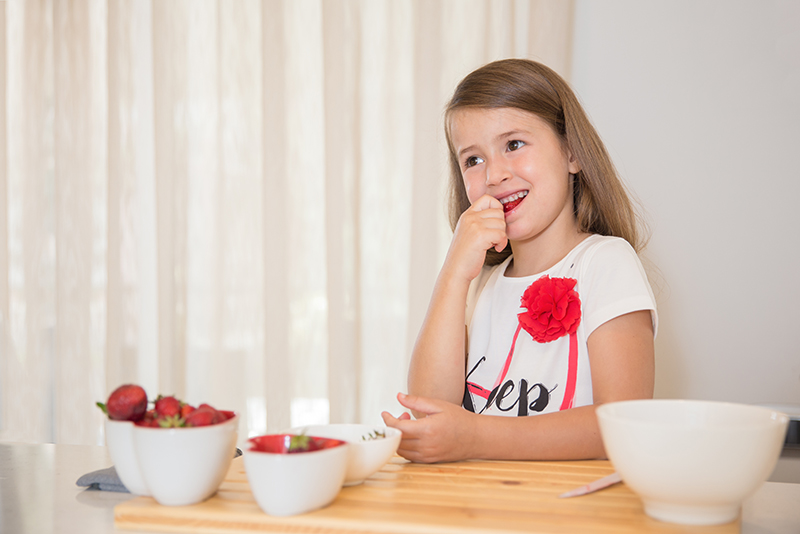In my practice as a Montessori teacher and as a mother, I often like to involve children in everyday cooking tasks in the kitchen. I cannot emphasize enough that this is the perfect opportunity to engage children and involve them in the process.
When my children linger around the kitchen, maybe even watching me, what they are really communicating is that they want to be shown and connected to what I am doing in that moment. If I find myself preparing a fruit salad, for example, I can easily teach them how to wash, cut and prepare a healthy snack.

They will feel a sense of belonging to the family meal and enjoy being a part of the process. Working alongside me, gives them a chance to satisfy their curiosity, perhaps learn about new vegetables and fruits or develop new motor skills.
These types of activities are a heavy point of focus in the Montessori method of parenting, as they allow the child to hone their concentration and fine motor skills, while simultaneously developing their self-esteem as a capable contributor to the family meal.
Preparing a snack
Provide your children with a security message before beginning the activity and explain they will need to be careful and that we do not use these devices as toys.
Begin by teaching your children how to use a small knife. Choose one that has a rounded point, such as a cheese knife. This type of knife has an edge just sharp enough to cut through soft cheese or a banana. Show your children how to grip the handle correctly and how to use it to spread butter or jelly on a cracker.
Once he has mastered spreading, you can go on to teach your child how to use knife to cut up soft food, such as banana or strawberry.

Firstly, Victoria has been shown how to cut up something soft such as strawberry or banana.

She neatly slices some strawberry on chopping board and adds it to her snack.

As children get older, stronger and more able to control the knife, give them more difficult things to slice, such as carrots and celery.
Learning new skills such as this one instills a sense of confidence within the child that carries on in their development. They will also feel joy sharing the fruit of their hard work they’ll want to taste their own culinary masterpieces.

Next time, rather than sending a child out of the kitchen when it’s time to cook, inviting them to participate in the process sends a message of trust in their abilities and allows them to feel they are a valued part of the family. As an added bonus, children involved in food preparation are less likely to be picky eaters!
Dr. Maria Montessori understood a child’s inner needs by the phrase, “Help me to do it alone.”
Here are a few ways you can set the child up for success as they embark on the challenge of cutting a banana for the first time:
Slow movements: It’s important to slowly model how to cut a banana before the child starts on their own, then step back and provide support only as needed or when requested.
Real materials: Use child-sized kitchen implements that are easy for their small hands to manipulate.
Order: Organize the activity for them on a tray, which creates a defined workplace and makes it easier for them to focus.
Here are some other ideas of activities for children in the kitchen:
- Washing vegetables
- Beating eggs
- Mashing avocado
- Scooping their own cereal out of a small container and adding milk from a small jag
- Peeling and slicing fruit
- Spreading crackers
- Squeezing orange or lemon juice
- Pouring water from a small jag
- Baking – helping to add ingredients, stirring, taking turns, measuring ingredients
- Snack time – helping themselves to food from an accessible area (have out only as much as we are happy for them to eat)
- Meal time – setting and clearing the table, washing dishes
However, once they have mastered the skills, they will be able to do more and more independently. My children love helping me around the kitchen. My daughter doesn’t let any Sunday morning without baking a cake or at least preparing some yummy muffins. David instead, likes to set the table ready and he beautifully decorates the place where we are going to eat the meal.
Remember it is mean to be fun. Stop before becoming overwhelmed. And keep practicing!
Many blessing,
Joanna


